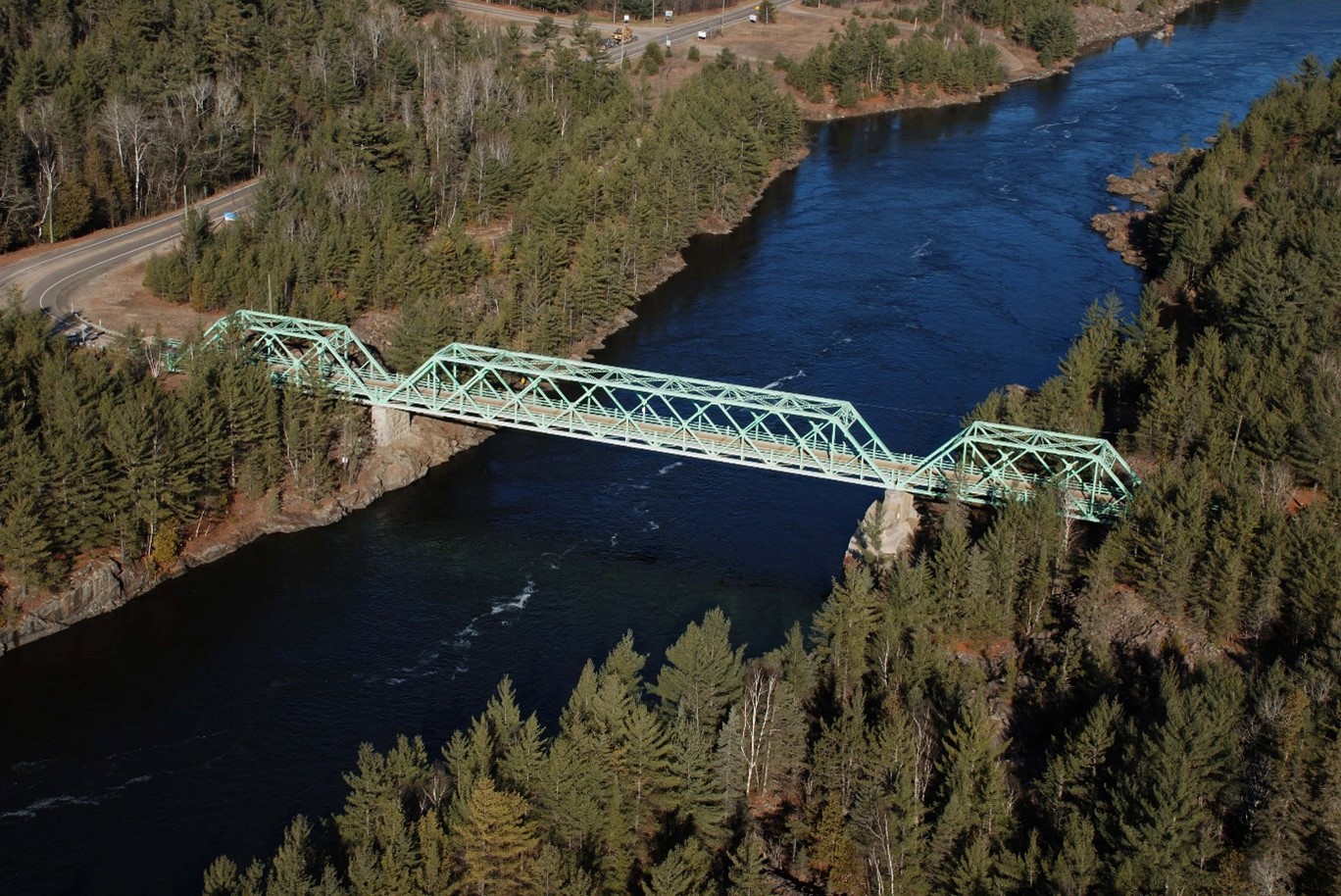Des Joachims Bridge
Learn about the Des Joachims Bridge, an interprovincial crossing over the Ottawa River in the Upper Ottawa Valley between the towns of Rapides-des-Joachims, Quebec, and Rolphton, Ontario.
On this page
About the bridge

The Des Joachims Bridge is a structure that is 5.3 metres wide with a single lane. It has an open steel grating deck and a vertical clearance of 4.6 metres. It is comprised of 3 through trusses and has a total length of 130 metres.
The bridge is used by area residents, businesses and tourists as it is the only interprovincial transportation link. Also, it is critical to Rapides‑des‑Joachims as the village is not connected to the rest of Quebec’s major road network and would otherwise be isolated.
The 2 closest major crossings on the Ottawa River are located at Témiscaming (140 kilometres northwest) and at Pembroke (60 kilometres southeast).
History of the bridge
The bridges at Rapides-des-Joachims are associated with the development of the region. The location of the Des Joachims Bridge is a significant place for both First Nations and European settlers. It was part of an important navigation route on the Ottawa River and a site for trade in timber, fur and fish in the 1600s to 1800s. The site was chosen due to the relatively shallow depth of the river at the rapids.
In the late 1800s, timber bridges were built over the north and south channels of the Ottawa River under joint participation of the Provinces of Quebec and Ontario and the Government of Canada. These bridges supported the lumber industry (transporting pulp chips, rough lumber and logs from the Quebec side to the Ontario side) and became the passage of local traffic.
Between 1901 and 1902, the wooden bridges were replaced by the federal government with steel structures. In 1964, the north channel was filled in and the north channel bridge was removed. The south channel was deepened, and the south channel bridge is now known as the Des Joachims Bridge.
The bridge was originally constructed with a timber deck, which was replaced with steel grating in 1970. In 1985, the floor beams were reinforced (capped with concrete), increasing the bridge capacity. From 1993 to 1994, the steel grating was replaced with a galvanized steel grating deck and the below deck was painted. The top of the Ontario pier was rehabilitated in 1999. In 2000, the above roadway steel was painted. In 2009, both piers on the Quebec and Ontario sides were repointed.
Key milestones
- 2013 and 2019: repairs to the bridge substructure masonry joints were completed
- 2022: structural strengthening of the bridge and railing safety upgrades are in progress
- 2023: repairs or replacements are planned for several components on the bridge approaches and substructures, including:
- asphalt repairs
- modification of sign heights
- guiderail repairs
- ballast wall replacements
- concrete and masonry substructure repairs
- embankment repairs
Operation of the bridge
Approximately 500 vehicles cross the bridge each day. Although the bridge provides only 1 lane, traffic flows in both directions, managed by appropriate signage. There are no sidewalks, curbs or medians associated with the structure.
To ensure the continued safe operation of the bridge, we maintain a rigorous annual inspection and assessment program for the bridge. Based on the findings of this program, repair and maintenance projects are then planned and completed.
Motorists and other users can expect to encounter intermittent lane closures and traffic delays to allow workers to safely:
- conduct repair and maintenance projects
- complete ongoing inspections and assessments of the bridge
If you have questions about current or upcoming closures or lane reductions on the Des Joachims Bridge, consult our media advisories.
Related link
Author
Page details
- Date modified: